
INDIA’S ‘FUTURE READY COMBAT VEHICLE’: SEEKING ENHANCED MOBILITY, FIREPOWER AND SURVIVABILITY

In the present paradigm of operational environments saturated with aerial/ground combat machines, inter-platform lethality/survivability have emerged as essential prerequisites for a combat platform, now and into the foreseeable future. While it may be pertinent to challenge the efficacy and/or survivability of mechanized platforms against the backdrop of global conflicts where drone predominance continues to be underscored, India’s vast Northern and Western Plains, coupled with extensive trans/cis border desert/semi-desert environments, reinforce the imperativeness of a robust tracked combat vehicle profile platform. A modern and lethal armoured fighting vehicle (AFV) profile with our mechanized formations is therefore necessary to serve as a deterrent and sustain combat advantage.
The Indian Armed Forces’ Technology Perspective and Capability Roadmap (TPCR)-2018, a vision document for capability building until the end of the present decade, lays down the broad qualitative requirements (QR) for future AFV systems, standards that the FRCV Program will be expected to meet and possibly surpass.

Source-defencedirecteducation.com
The Path of the FRCV Program
A Request for Information (RFI) for the FRCV was initially floated by the Integrated Headquarters of Ministry of Defence (Army) in November 2017, which specified the requirement to procure 2000 units under the ‘Make in India’ initiative, aimed at replacing the aging T-72 Main Battle Tank (MBT). This RFI was issued under the ‘Make’ category, conforming to the contents of Chapter VII of the Defence Procurement Procedure-2016, for procurement through the ‘Strategic Partnership’ (SP) model route, wherein an Indian firm was required to partner with a foreign OEM to manufacture the FRCV in India. While countries including the US, UK, France, Germany, South Korea, Russia and Ukraine had responded, the 2017 RFI was superseded by the RFI floated in May 2021, primarily due to significant changes that needed to be incorporated to make the platform ‘future ready’.
The latest RFI of May 2021 seeks the induction of approximately 1770 units of the FRCV MBT, with induction commencing by 2030, along with necessary logistics support, Transfer of Technology (ToT), Engineering Support Package and miscellaneous maintenance/training requirements.
Unlike the previous RFI, RFI-2021 stipulates procurement of the FRCV platform under the Make-I Category of the Defence Acquisition Procedure-2020, aimed at participation of Indian firms as Development Agencies (DA) under the ‘Make in India’ paradigm. For such projects, an Indigenous Content (IC) of 50% is stipulated, which infers that the aid sought by DAs from foreign OEMs for provision/manufacture of assemblies/sub-assemblies, will not exceed 50% of the content, by cost. The Government of India can provide financial aid for prototype development which would be released in a phased manner to the nominated DA(s), if approved. Selection/shortlisting of DA(s) would consider the approximate cost estimate provided by the DA(s) and capability of DA(s) to undertake design/development of the system/subsequent upgrades. The Acceptance of Necessity (AoN) has thus been sought for the combined estimated cost of the prototype phase and the cost of subsequent procurement under the Buy Indian- (Indigenously Designed, Developed and Manufactured [IDDM]) Category.
Accordance of AoN on 03 September 2024 by the Defence Acquisition Council, has kickstarted the process. The Project Facilitation Team (PFT), constituted by Army HQ, will order the preparation of a Project Definition Document (PDD) and provide to the nominated DA(s) the Preliminary Staff Qualitative Requirements (PSQRs) for the FRCV, along with timelines/milestones, the methodology and criteria for the evaluation process. Presently, the PSQRs are in the draft stage as this article is written. The phased induction of the FRCV would allow the PFT to periodically assess the project for time/cost overruns and relevance vis-à-vis current technology. The Expression of Interest (EoI) would be issued to the DA(s) and Detailed Project Report (DPR) sought. This would be followed by issue of Request for Proposal (RFP), final shortlisting of DA(s), prototype design/development (envisaged within four years), conversion of PSQRs into Service Qualitative Requirements, Field Evaluation Trials, cost negotiation and award of contract to one or more DA(s).
Going by previously demonstrated technical capabilities for development/ manufacture/system integration in the Defence manufacturing sector, it is appreciated that private firms like Tata Power SED, Tata Motors, Reliance Defence and Engineering Limited, Mahindra Group, Bharat Forge etc. could bid for the contract and figure in the list of DAs, amongst others. In addition to private DAs, the FRCV contract is also likely to see the involvement of the Defence PSU, Armoured Vehicles Nigam Ltd.
To provide impetus to indigenisation, modalities of ToT and IC will be specified in the EoI issued to the DAs. The ‘Make in India’ initiative has been purposely planned, in order to put in place a viable and self-contained industrial and manufacturing ecosystem for India’s future plans for a 100% indigenously designed, developed and manufactured MBT platform, as has also been envisaged for the Indian Army’s Futuristic Infantry Combat Vehicle (FICV) Program (read more about the FICV @ https://chanakyaforum.com/indias-futuristic-infantry-combat-vehicle/).
Salient Contours of RFI-2021 for the FRCV
RFI-2021 envisages a new ‘state-of-the art, technology-enabled tank to operate in varied terrain profile (High Altitude Areas, Plains/Riverine, Deserts/Semi-Deserts) across the current/future spectrum of conflict, which will remain in service for the next 40-50 years as the MBT of the Indian Army’. The RFI seeks a modular, upgradable design, wherein the FRCV design would be able to seamlessly incorporate future technologies capable of being integrated into the basic design of the FRCV platform. The FRCV platform is envisaged to serve the Indian Army into/beyond the 2050s.
While the initial numbers of FRCV would be made up wholly by the FRCV MBT, the new FRCV platform would subsequently serve as a platform for as many as 11 different vehicles, including light tracked/wheeled combat/fighting vehicles, bridge layer/trawl tanks, Artillery self-propelled howitzers & Observation Post platforms, Air Defence guns, Engineering Reconnaissance Vehicles and armoured ambulances.
The FRCV is required to have state-of-the-art firepower, lethality, mobility and survivability in a contested, network-centric and Electronic Warfare (EW) environment. Salient operational features are tabulated below.

Note.
# Likely a 3rd /4th /5th Generation indigenous top-attack ATGM (NAG [Prospina] /SAMHO/Fifth Generation ATGM respectively) with kill probability > 90% (read more @ https://chanakyaforum.com/indias-atgms-lethal-anti-armour-capability/).
@ Likely to be 120mm/125mm Main Gun.
Global Trends in MBTs
Since the bulk of the FRCV order would be for FRCV MBTs, a brief global scan of MBTs, which might serve as reference for the Project, with respect to various features, is elucidated below, in no particular order of preference.
France’s Leclerc XLR. The Leclerc XLR MBT boasts of networked architecture, a NBC protection system, the SCORPION Information and Command System (SICS) and a multi-spectral passive countermeasures system linked to a Laser Warning System (LWS). The upgraded Leclerc comes with a counter-IED jammer that prevents IEDs from being detonated by remote control, new man-machine interfaces for commander/gunner, redesigned main system computers, and a battle health monitoring system. The MBT mounts a Giat 120 mm, 52-caliber smoothbore gun with a coaxial 12.7mm machine gun (MG), a turret-mounted Remote-Controlled Weapon-Station (RCWS) and an automatic loading system (ALS). It can fire in-service ATGMs. Nexter has also developed a new 120mm High-Explosive (HE) round that can be set for impact/delay/airburst functions. The FCS mounts a modular thermal imaging camera, Thales laser rangefinder (LRF) and stabilized sights for the commander/gunner. The MBT has modular/active armour on the hull and turret with wire-cage armour over the engine/rear. It has a combat weight of 57 tons, a powerpack delivering 1500 HP and a fully automatic transmission system (FATS). The MBT has a road/offroad speed of 72 kmph/50 kmph respectively, thrust-to-weight ratio (TWR) of 24 HP/ ton, with a cruising range of 615 Km. It requires a crew of three personnel.

Leclerc MBT:Source-armyrecognition.com
Russia’s T-14 Armata. The Russian T-14 Armata MBT is based on the Armata Universal Combat Platform. It has a crew of three personnel. Its main armament is a 125 mm (upgradable to 152 mm) smoothbore cannon, with secondary armament of one 12.7mm and 7.62mm MG, each controlled from a RCWS. It could also mount a 30mm Anti-Aircraft Gun. The MBT can fire in-service ammunition and ATGMs, including the new HE controlled-detonation Teknik HE-Fragmentation shell. The MBT uses an integrated, computerized control/health monitoring system. In battle, the software can analyse threats and then either suggest or automatically take actions to eliminate them and can also detect/rectify crew errors. The commander and gunner have multispectral image sights, with thermography channels and LRFs. The MBT features the Afganit Active Protection System (APS), with an AESA Radar, offering soft/kinetic kill options. The main protective steel armour is 15% lighter, has extremely high durability and is able to withstand extreme temperature environments. The composite armour has a new ceramic layer and utilises New Generation (NG) Explosive Reactive Armor (ERA) within its base design, as a continuous layer and not as layered bricks.
Applique armour is mounted on the sides in the forward 2/3rd. Slat (cage) armour is in the rear 1/3rd, on the sides and the back. The crew is protected by an internal armoured capsule. The MBT weighs 55 tons. The diesel, double-turbocharged engine can produce 1500 HP, with a TWR of 27.3 HP/ton, FATS, top speed of 75-82 kmph and a minimum combat range of 500 Km.

T-14 Armata MBT:Source-hotcars.com
USA’s M1A2SEPv3 (Abrams). The M1A2 Abrams SEPv3 retains the layout of the M1A2 MBT and has a crew of four personnel. Many of the tank’s assemblies/sub-assemblies are modular, allowing for easy maintenance/replacement in the field. The tank integrates a joint tactical radio system, ensuring interoperation with future brigade combat teams. The main gun is a 120mm smoothbore cannon, which can fire M829A4 advanced kinetic energy and advanced multi-purpose (AMP) rounds, programmed via an ammunition data link, against armoured vehicles, personnel and low-flying aircraft. The MBT mounts a RCWS installed with an upgraded day camera offering a 340% larger field-of-view and a 12.7mm MG. A 7.62mm MG is mounted coaxially with the main gun. The MBT mounts an improved forward-looking infrared (IFLIR) that employs long/mid-wave IR technology to enhance target acquisition, identification, and engagement. The hull and turret integrate a new armour package for superior protection against IED threats. The tank can be hinged with ERA/slat armour. The CREW Duke V3 counter remote-controlled IED EW system protects the crew from roadside bombs/IED attacks. In 2022, the Trophy APS was installed on the MBT. The MBT is powered by a gas turbine engine, which generates 1500HP. The auxiliary power unit enables the tank to operate onboard systems with enhanced stealth. The MBT, however, weighs 66.8 tons, offering a PWR of 23.8 HP/ton. It offers a maximum on-road/off-road speed of 72 kmph/40 kmph respectively, with a combat range of 429 Km.
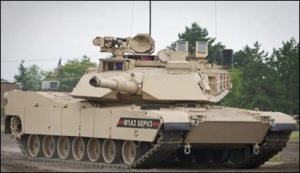
M1A2SEPv3 MBT:Source-warriormaven.com
Israel’s Merkava Mark-4 Barak. Merkava Mark-4M Barak is the latest version of Israel’s Merkava MBT. It is armed with a 120 mm smoothbore gun which can fire almost all versions of Western 120 mm smoothbore ammunition, as well as the LAHAT ATGM, with a land-fired operational range of 8000m. The MBT has two roof-mounted 7.62 mm MGs for use by the commander/loader and another mounted co-axially with the main gun. A 60 mm mortar is fitted for firing smoke rounds for suppressing dug-in Infantry anti-tank teams. It is also mounted with a remote-controlled .50 calibre heavy MG. Removable modular composite armour is used on all sides, including the top and a V-shaped belly armour pack for the underside, allowing quick repair/replacement. The MBT turret is electrically driven. Low observable features like shaping/exterior non-reflective paints/shielding for engine heat plumes make the tank harder to target by heat sensors/radar. The MBT has a caterpillar track system, designed to reduce track-shedding over hard/rocky terrain. The MBT mounts the Elbit Battle Management System, Knight Mark 4 FCS, an Amcoram LWS-2 laser warning receiver and electromagnetic warning against radar illumination. The Mark-4 Windbreaker is mounted with the Trophy APS and 360-degree day/night camera coverage for enhanced situational awareness (SA). The MBT weighs 65 tons. The turbocharged diesel engine produces 1512 HP, with a TWR of 23 HP/ton. It has a combat range of 500 Km and a maximum road speed of 64 kmph.

Merkava Mark-4 Barak:Source-pinterest.com
Italy’s Ariete C2. The Ariete C2 is the successor of the Ariete C1 MBT.
It is characterized by high mobility, advanced armour protection and substantial firepower. The hull and turret are made of welded steel with composite armour. The MBT incorporates a FATS. The upgraded heavy-duty final drives and the widened track system provide increased mobility in all operative conditions. The dual-stabilised 120mm smoothbore gun can fire all standard NATO ammunition. It mounts a 7.62mm MG coaxially and on the turret roof together with a 12.7mm MG for local/air defence. The new FCS includes day/night commander’s panoramic sight and gunner’s sight, both with third-generation thermal imagers and eye-safe LRF. C4I includes Leonardo’s Software Defined Radio, digital intercom, C2 and navigation system, making the MBT NCW ready. It has a crew of three personnel. The MBT weighs 62.5 tons. The upgraded turbocharged diesel powerpack delivers 1500 HP, with a TWR of 24 HP/ton. It has a maximum speed of 60 Kmph and a maximum road range of 550 Km.
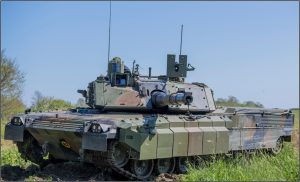
Ariete C2 MBT:Source-iveco-otomelara.com
Serbia’s M-84 AS1. The M-84AS1 2020 version has a turret and hull almost completely covered with 2nd Generation ERA and with titanium-aluminium-tungsten alloy armour. The MBT incorporates a ‘soft-kill’ APS. Day/night thermal cameras and commander scope with 6 low-light cameras and other sensors increase SA of the three-member tank crew. Early warning sensors against radar detection, laser designation and incoming rockets are coupled with automatic delivery of smoke grenades towards the threat to achieve protection. Automatic fire extinguisher capable of reacting in milliseconds, with modern UV sensors for fire detection have been added to mitigate explosions in the tank compartment. The MBT mounts a 125mm smoothbore gun with a RCWS controlled 12.7mm MG. The MBT weighs 45 tons. The diesel power pack generates 1200 HP, generating a TWR of 26.7 HP/ton. The combat range is 700 Km with a top speed of 80 kmph, making it one of the fastest MBTs.

M-84 AS1 MBT:Source-Wikipedia
Other MBTs that might warrant study are Germany’s Leopard-2A7, UK’s Challenger-3, Turkey’s Altay-T2 and Ukraine’s T-84 Oplot-M, among others. Detailed descriptions of these MBTs have not been included for the sake of brevity.
It is appreciated that salient features of the indigenous Arjun Mark 1/1A/2, including the FCS, composite ‘Kanchan’ armour, armament and Advanced Laser Warning Countermeasure System could be considered mutatis mutandis, with necessary upgrades for the FRCV (read more about the Arjun MBT @ https://chanakyaforum.com/indias-arjun-mark-1a-vs-pakistans-vt-4-rival-chariots-of-fire/ ). This would economise on time, effort and production costs of the FRVC Programme.
Conclusion
The FRCV Project promises to be a far-reaching program with relevance well past the midpoint of the 21st century, as a provider for the Indian Army’s future-ready MBT and associated support platforms. Apropos, substantial diligence and foresight would be required to create a FRCV platform that would accrue combat advantage all along India’s multi-terrain borders and against two diverse adversaries.
Disclaimer
The opinions expressed in this article are the author’s own and do not reflect the views of Chanakya Forum. All information provided in this article including timeliness, completeness, accuracy, suitability or validity of information referenced therein, is the sole responsibility of the author. www.chanakyaforum.com does not assume any responsibility for the same.
Chanakya Forum is now on . Click here to join our channel (@ChanakyaForum) and stay updated with the latest headlines and articles.
Important
We work round the clock to bring you the finest articles and updates from around the world. There is a team that works tirelessly to ensure that you have a seamless reading experience. But all this costs money. Please support us so that we keep doing what we do best. Happy Reading
Support Us






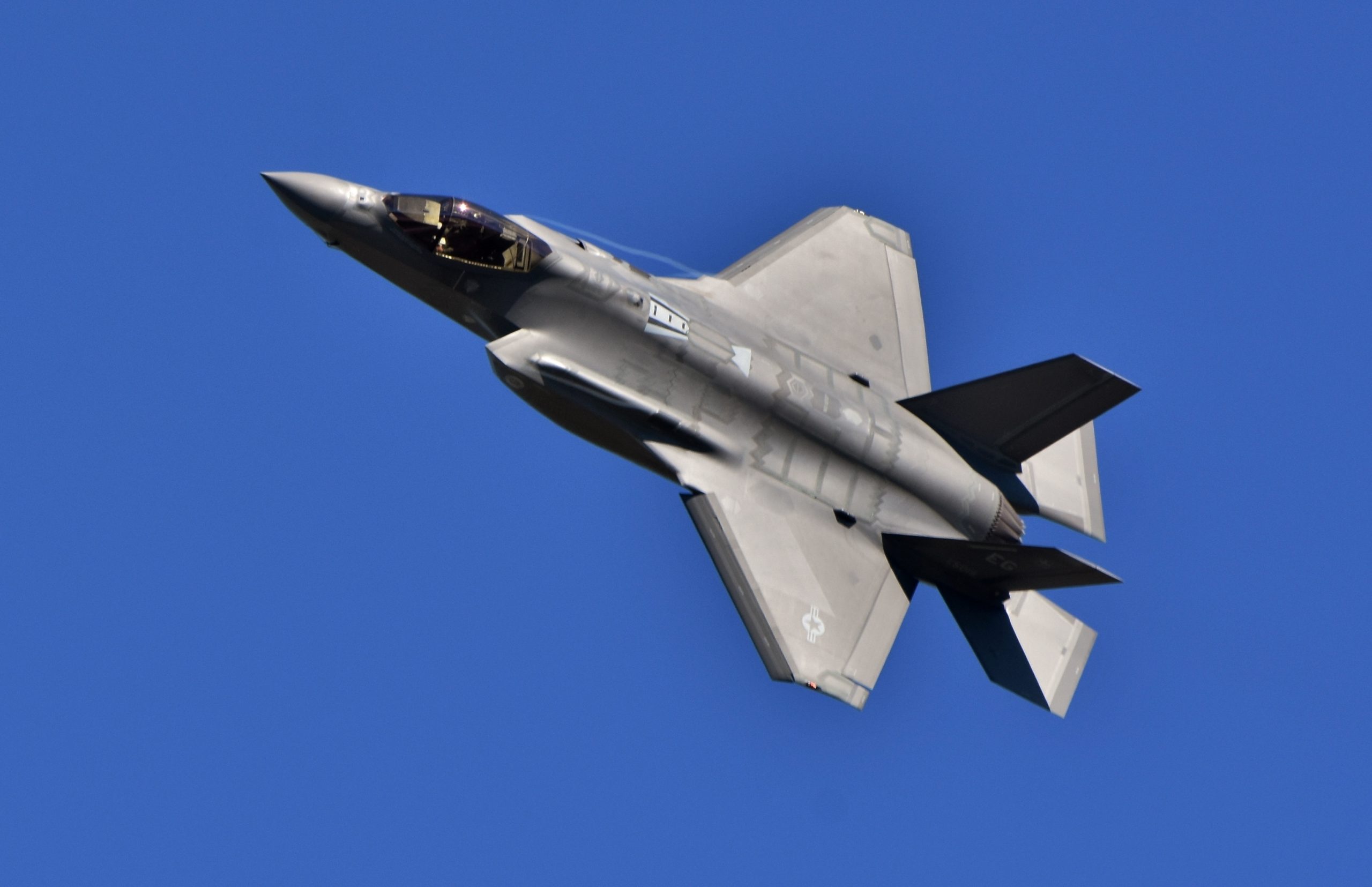
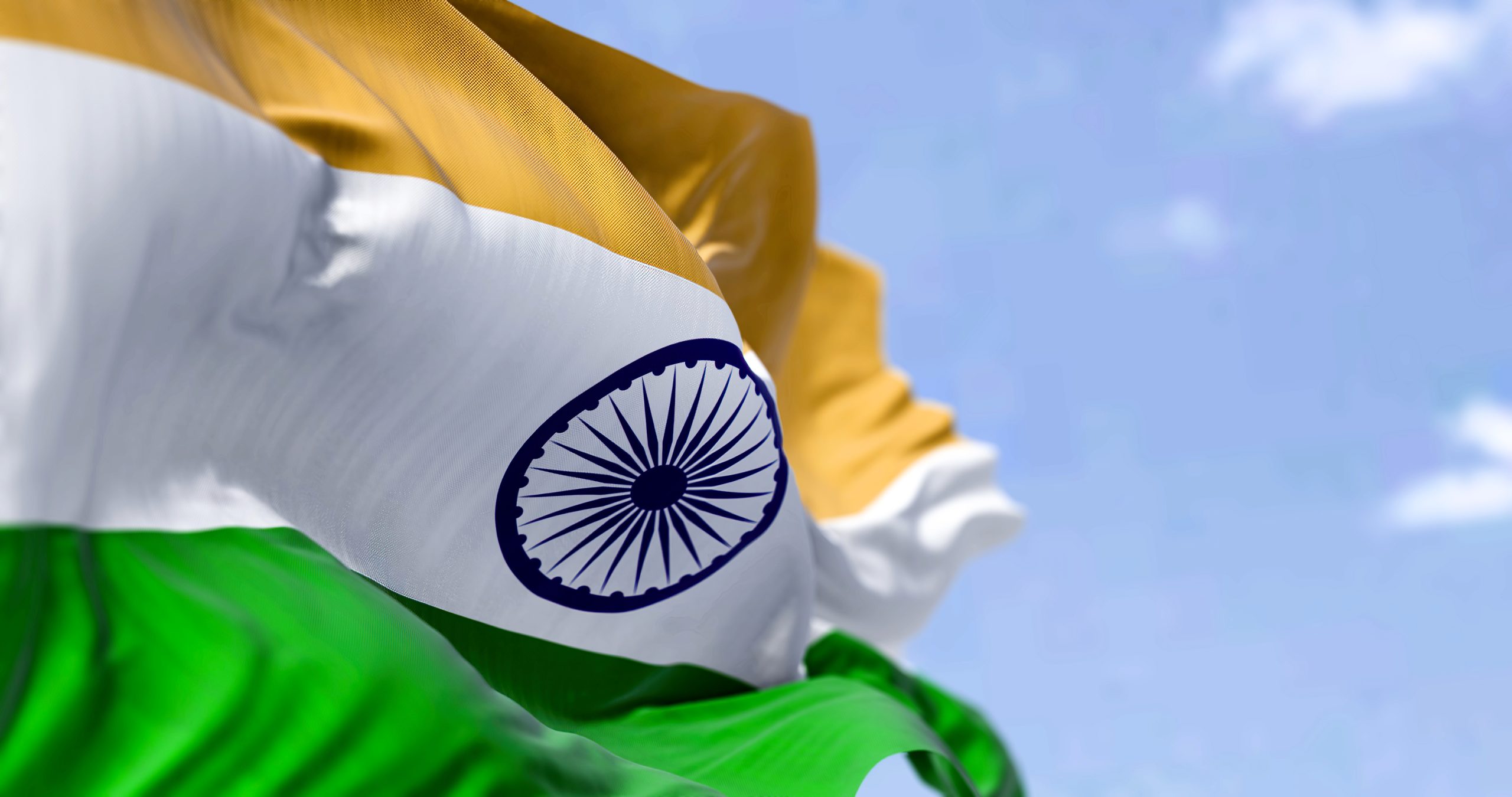

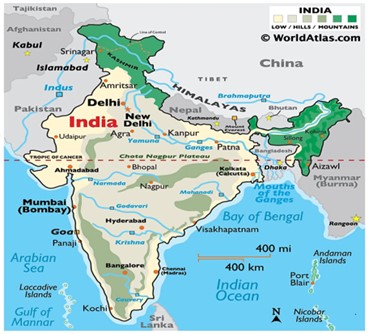











POST COMMENTS (0)